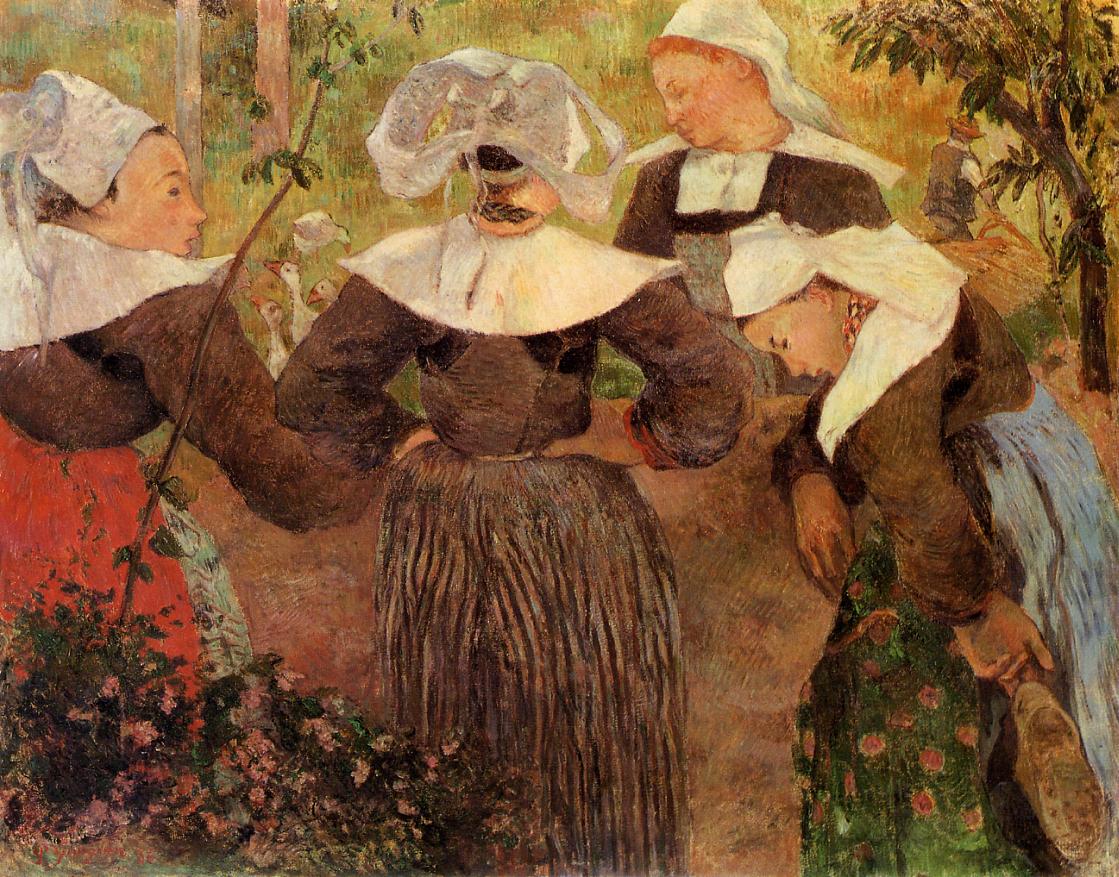art-Gauguin.com
Paul Gauguin 1848-1903
Paul Gauguin - Four Breton Women 1886
 Four Breton Women |
From Paul Gauguin: 164 Paintings and Drawings by Maria Tsaneva (Author):
In 1886, Gauguin settled in Pont-Aven, a small coastal village in Brittany. Here he devoted himself entirely to painting. In the present painting the depiction of local costumes and dancing shows the painter's interest in Breton peasant life.
Although this work represents Breton subject matter, it was probably painted from memory and from sketches back in Paris in the winter of 1886-87, an indication that Gauguin was already edging towards the synthetist treatment for his subjects by this time. The forms have been deliberately flattened, with attention paid to the white headresses and small shawls worn by the women, and a deliberate suppression of atmosphere and distance within the picture space by avoidance of a horizon and by the use of saturated colours.
Despite its authentic 'primitive' feel, the work is an elaborate fiction. The fancy dress that the woman are wearing had been abandoned by the Breton peasantry except for the celebration of pardons, and they were enjoying a period of relative prosperity, in part financed by a flourishing tourist trade. By painting works like this from memory, Gauguin could confect a vision of Breton life that was much closer to his notion of what constituted a 'primitive' existence than any that he could have found at this time.